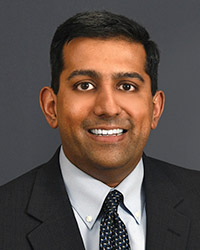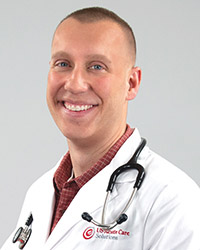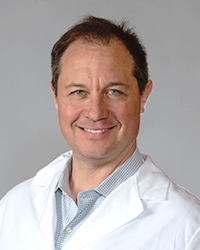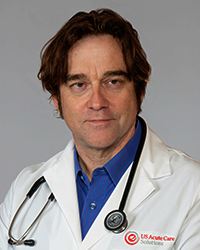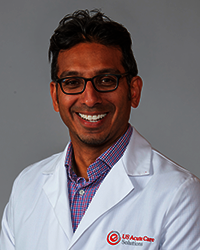
Mission, Vision, and Principles
Mission
To improve the care of our patients through research
Vision
To be the leader in the publication of high-quality acute care research by leveraging our national scale, expertise, innovations, and data.
Guiding Principles
- Dedication to our Mission. We prioritize research in clinical care, systems-based processes, population health, health services, and resource utilization.
- Publication Commitment. We are committed to publication in peer-reviewed literature regardless of the results to ensure the integrity of our research process.
- Internal Collaboration. We offer research opportunities to our fellow USACS partners.
- External Collaboration. We partner with external experts. We consider participation in externally led research that aligns with our mission, vision, and principles.
- External Funding. We seek funding to support our research mission, vision, and principles. Funders shall not influence our results or commitment to publishing.
- Regulatory and ethical norms. We conform to all regulatory and ethical requirements of research, clinical care, and USACS.
Research Group
What We Publish
See some of the important questions the USACS Research Group has answered.
Q: What factors are associated with being named in a malpractice claim?
A: After examining practice, clinical, site, and jurisdictional factors, the only things associated with being named in a malpractice claim were volume of visits seen and years worked.
Jestin N. Carlson, Krista M. Foster, Jesse M. Pines, Christopher K. Corbit, Michael J. Ward, Muhammad Zia Hydari, Arvind Venkat, “Provider and Practice Factors Associated with Emergency Physicians Being Named in a Malpractice Claim,” Annals of Emergency Medicine, Volume 71, Number 2, February 2018, 157-164, e4
https://www.annemergmed.com/article/S0196-0644(17)30786-2/fulltext
Q: What is the variability and reliability of patient-experience survey data (Press Ganey) at a site and Clinician level?
A: There is little reliability and wide variability in this data for Clinicians. For sites, there is better, but still relatively mediocre reliability and medium-level variability in patient-experience survey data.
Jesse M. Pines, Pooja Penninti, Sukayna Alfaraj, Jestin N. Carlson, Orion Colfer, Christopher K. Corbit, Arvind Venkat, “Measurement under the Microscope: High Variability and Limited Construct Validity in Emergency Department Patient-Experience Scores,” Annals of Emergency Medicine, Volume 71, Number 5, May 2018, 545-554, e6
https://www.annemergmed.com/article/S0196-0644(17)31899-1/fulltext
Q: How can we fairly compare and compensate for productivity when working at sites with such different volumes and patient populations, all of which must be staffed in a large acute care group?
A: Proposes a formula to allow comparisons in productivity among Physicians and APPs working in different practice settings under the management of the same group.
Krista M. Foster, Pooja Penninti, Jennifer Shang, Sunder Kekre, Gajanan G. Hegde, Arvind Venkat, “Leveraging Big Data to Balance New Key Performance Indicators in Emergency Physician Management Networks,” Productivity and Operations Management, Volume 27, Number 10, October 2018, 1795-1815
https://onlinelibrary.wiley.com/doi/10.1111/poms.12835
Q: How did reimbursement change for emergency Physicians after implementation of Medicaid expansion under the Affordable Care Act?
A: Compensation for emergency Physician services increased on average by 8% in states that expanded Medicaid under the Affordable Care Act.
Jesse M. Pines, Rahul Ladhania, Bernard S. Black, Jestin N. Carlson, Christopher K. Corbit, Arvind Venkat, “Changes in Reimbursement to Emergency Physicians After Medicaid Expansion Under The Patient Protection and Affordable Care Act,” Annals of Emergency Medicine, Volume 73, Number 3, March 2019, 213-224
https://www.annemergmed.com/article/S0196-0644(18)31374-X/fulltext
Q: How frequently do emergency Physicians perform intubations in clinical practice across practice settings?
A: On average, emergency Physicians perform 10 intubations annually in general ED practice, with lesser levels in pediatric EDs, and even less in freestanding EDs or urgent cares.
Jestin N. Carlson, Mark Zocchi, Karla Marsh, Chloe McCoy, Jesse M. Pines, Adam Christensen, Rebecca Kornas, Arvind Venkat, “Procedural Experience with Endotracheal Intubation: Results from a National Emergency Medicine Group,” Annals of Emergency Medicine, Volume 74, Number 6, December 2019, 786-794
https://www.annemergmed.com/article/S0196-0644(19)30348-8/fulltext
Q: How does clinical practice by emergency Physicians change after being named in a malpractice claim?
A: Clinical practice changes little in terms of testing use and admission decisions after being named in a malpractice claim, but patient experience data subsequently improved for emergency Physicians named in a malpractice claim.
Jestin N. Carlson, Krista M. Foster, Bernard S. Black, Jesse M. Pines, Christopher K. Corbit, Arvind Venkat, “Emergency Physician Practice Changes After Being Named in a Malpractice Claim, Annals of Emergency Medicine, Volume 75, Number 2, February 2020, 221-235
https://www.annemergmed.com/article/S0196-0644(19)30575-X/fulltext
Q: How does Maryland's unique model for reimbursing hospital care affect ED admissions?
A: There are marginal differences in admission decisions by emergency Physicians in Maryland in comparison to those caring for similar patients elsewhere. The areas in question include respiratory and endocrine conditions.
Jessica E. Galarraga, Bernard S. Black, Laura Pimentel, Arvind Venkat, John P. Sverha, William J. Frohna, Daniel L. Lemkin, Jesse M. Pines, “The Effects of Global Budgeting on Emergency Department Admission Rates,” Annals of Emergency Medicine, Volume 75, Number 3, March 2020, 370-381
https://www.annemergmed.com/article/S0196-0644(19)30499-8/fulltext
Q: How often do emergency Physicians perform critical procedures (e.g., intubations, central lines, etc.) in pediatric patients in practice?
A: Emergency Physicians rarely perform critical procedures in pediatric patients in practice.
Jestin N. Carlson, Mark S. Zocchi, Coburn Allen, T. Kent Denmark, Jay D. Fisher, Matthew Wilkinson, Katherine Remick, Abbie Sullivan, Jesse M. Pines, Arvind Venkat for the US Acute Care Solutions Research Group, “Critical Procedure Performance in Pediatric Patients: Results from a National Emergency Medicine Group,” American Journal of Emergency Medicine, Volume 38, Number 9, September 2020, 1703-1709
https://www.sciencedirect.com/science/article/abs/pii/S073567572030485X?via%3Dihub
Q: Does rising acuity and complexity of patients, as well as the performance of critical procedures, affect how we schedule Clinicians, or should we focus more on temporal factors such as time of day and day of week?
A: Acuity and complexity of patients and performance of critical procedures has little impact on patient throughput in the ED. Instead, temporal factors are far more critical in scheduling Clinicians.
Jesse M. Pines, Mark Zocchi, Valerie DeMaio, Jestin N. Carlson, John Bedolla, Arvind Venkat for the US Acute Care Solutions Research Group, “The Impact of Operational Stressors on Emergency Department Clinician Scheduling and Patient Throughput,” Annals of Emergency Medicine, Volume 76, Number 5, November 2020, 646-658
https://www.annemergmed.com/article/S0196-0644(20)30102-5/fulltext
Q: How does the scheduling of APPs affect ED productivity and patient flow, safety and experience?
A: The use of APPs has marginal impact on ED productivity and patient flow with no identified economies of scale from the use of APPs relative to emergency Physicians. There was no identified impact on patient safety or experience.
Jesse M. Pines, Mark S. Zocchi, Tamara Ritsema, Maura Polansky, John Bedolla, Arvind Venkat for the US Acute Care Solutions Research Group, “The Impact of Advanced Practice Provider Staffing on Emergency Department Care: Productivity, Flow, Safety, and Experience,” Academic Emergency Medicine, Volume 27, Number 11, November 2020, 1090-1099
https://onlinelibrary.wiley.com/doi/10.1111/acem.14077
Q: Do emergency Physicians and APPs differ in their use of testing resources or admission levels for patients presenting with chest or abdominal pain who have similar complexity and acuity?
A: After controlling for complexity and acuity, emergency Physicians and APPs do not differ in testing resource use or admission decisions in patients presenting with chest or abdominal pain.
Jesse M. Pines, Mark S. Zocchi, Tamara Ritsema, John Bedolla, Arvind Venkat for the US Acute Care Solutions Research Group, “Emergency Physician and Advanced Practice Provider Diagnostic Testing and Admission Decisions in Chest and Abdominal Pain,” Academic Emergency Medicine, Volume 28, Number 1, January 2021, 36-45
https://onlinelibrary.wiley.com/doi/10.1111/acem.14161
Q: How did the Affordable Care Act affect ED use among patients who went from being uninsured to having Medicaid insurance?
A: Patients who acquired Medicaid insurance under the Affordable Care Act used the ED for higher acuity conditions in comparison to those who remained uninsured.
Rahul Ladhania, Amelia M. Haviland, Arvind Venkat, Rahul Telang, Jesse M. Pines, “The Effect of Medicaid Expansion on the Nature of New Enrollees’ Emergency Department Use,” Medical Care Research and Review, Volume 78, Number 1, February 2021, 24-35
https://journals.sagepub.com/doi/full/10.1177/1077558719848270
Q: How did the COVID-19 Pandemic impact pediatric visits to the ED?
A: Pediatric visits dropped significantly more than those for adults during the pandemic. This includes certain serious conditions (e.g., appendicitis, sepsis) one would expect to present regardless of societal interactions.
Jesse M. Pines, Mark S. Zocchi, Bernard S. Black, Jestin N. Carlson, Pablo Celedon, Ali Moghtaderi, Arvind Venkat, for the US Acute Care Solutions Research Group, “Characterizing Pediatric Emergency Department Visits During the COVID-19 Pandemic,” American Journal of Emergency Medicine, 2020 (accepted, in press)
https://pmc.ncbi.nlm.nih.gov/articles/PMC7682424/
Q: How did ED visits for substance use disorders change during the early part of the Covid-19 pandemic (January-July 2020) in comparison to 2019?
A: ED visits for substance use disorders fell during the initial stage of the pandemic, but less than that of overall ED visits. Substance use disorder visits came back to a similar level observed in early 2020 by the summer. While other studies have reported a spike in substance use disorder ED visits during the pandemic, we did not observe this phenomenon. Instead, our longer study period showed a rise in substance use disorder ED visits pre-Covid that returned to that trajectory after the easing of societal restrictions in late-spring 2020.
Jesse M. Pines, Mark S. Zocchi, Bernard S. Black, Jestin N. Carlson, Pablo Celedon, Ali Moghtaderi, Arvind Venkat, "How emergency department visits for substance use disorders have evolved during the early COVID-19 pandemic," Journal of Substance Abuse Treatment, 2021 (accepted, in press)
https://www.sciencedirect.com/science/article/pii/S0740547221001173
Q: What has been the impact of the COVID-19 pandemic on the presentation of patients with serious cardiovascular conditions to the emergency department?
A: In comparison to 2019, there was a significant drop-off in presentations of serious cardiovascular conditions (ST-Elevation MI, Non-ST-Elevation MI, Hemorrhagic Stroke, Ischemic Stroke, and Heart Failure as primary diagnoses) overall during the initial surge of COVID-19 in early spring 2020. But those presentations had returned to levels similar to 2019 by the summer and fall of 2020. Much of this was driven by presentations for heart failure. Presentations for hemorrhagic stroke rapidly returned to baseline levels shortly after public restrictions were relaxed in spring 2020 while those for ST-elevation MI did not show a clear pattern of change throughout the study period to fall 2020.
Jesse M. Pines, Mark S. Zocchi, Bernard S. Black, Pablo Celedon, Jestin N. Carlson, Ali Moghtaderi, Arvind Venkat for the US Acute Care Solutions Research Group, “The Effect of the COVID-19 Pandemic on Emergency Department Visits for Serious Cardiovascular Conditions,” American Journal of Emergency Medicine, 2021 (accepted, in press)
https://pmc.ncbi.nlm.nih.gov/articles/PMC7939976/
Q: How did the COVID pandemic affect the economics of delivering emergency care?
A: The pandemic’s surprising reduction in patient volume radically decreased clinical revenue necessitating cuts in Physician and, more so, APP hours to match staffing costs to income. While this largely restored the balance at medium- and high-volume EDs, losses could not be offset at low-volume EDs given the need for 24-7 emergency Physician coverage. These findings highlight the vulnerability of the fee-for-service model in financing emergency care.
Amer Aldeen, MD, Jason Shawbell, RN, MS, Paul Dietzen, BA, and Jesse Eterovich, MBA. For the US Acute Care Solutions Research Group, The Effect of the COVID-19 Pandemic on the Economics of United States Emergency Care. Annals of Emergency Medicine.
https://www.annemergmed.com/article/S0196-0644(21)00333-4/fulltext
Q: Does feedback from USACS leadership reduce excessive opioid prescribing to patients discharged from the ED?
A: After implementation of a feedback program, opioid prescribing dropped 19% overall and the Physicians and APPs in the highest prescribing pre-intervention group decreased prescriptions by 35% and 41%, respectively. The decrease was maintained for the 7-month post-intervention period.
Jonathan Oskvarek, Amer Aldeen, Jason Shawbell, Arvind Venkat, Mark S. Zocchi, Jesse M. Pines, “Opioid Prescription Reduction After Implementation of a Feedback Program in a National Emergency Department Group,” Annals of Emergency Medicine. January 2022
https://www.annemergmed.com/article/S0196-0644(21)01528-6/fulltext
CONTACT US
Want to learn more about the USACS Research Group? Fill out the form below to get in touch.
